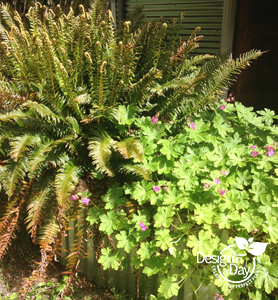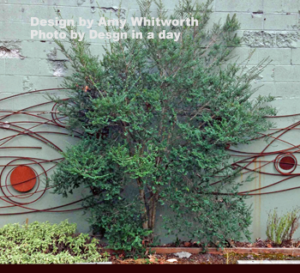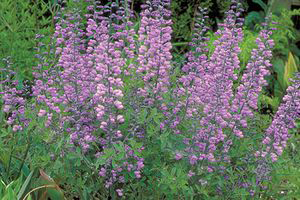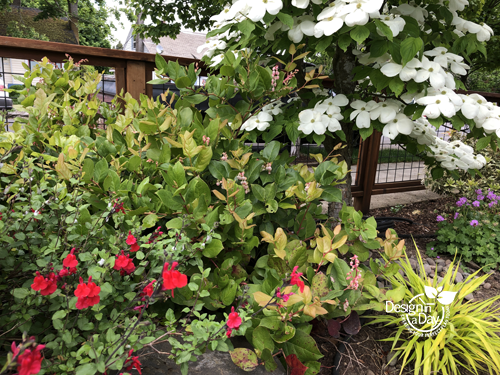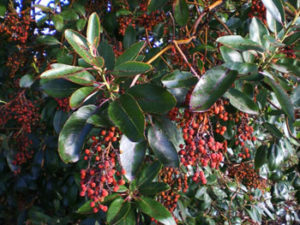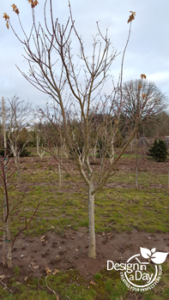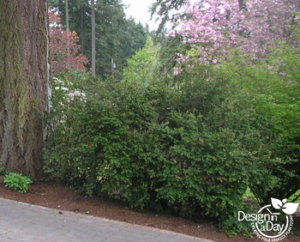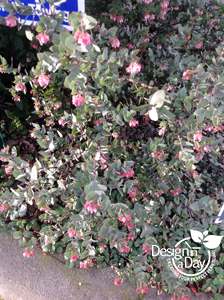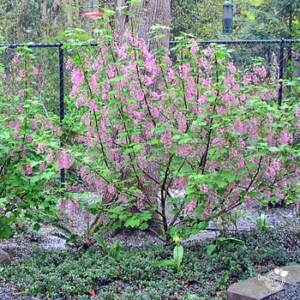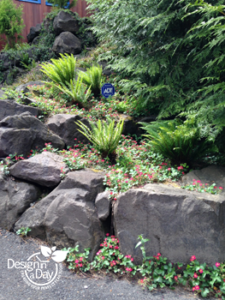Low Maintenance Garden Design for Backyard in Woodstock Neighborhood
Client Wish List:

New Dining Area! Just waiting on the rest of the plants to make this corner complete.
Jill recently moved to Portland from an entirely different climate. She is a gardener and knows that a different climate means an entirely different set of plants, watering strategies, and soils. So she wanted Portland native plants to celebrate her new home in the Pacific Northwest. Getting expert advice about plants that would thrive here was her number 1 concern. She wanted a vibrant garden with some traditional and colorful plants. She also wanted her grandchildren, who live nearby, to enjoy playing in the backyard.
She already had a covered area for lounging adjacent to the house. She wanted to add an area for family dining, some edibles, and a play structure.

Before – Doug Fir Trunk is 6′ wide at the base.
Designing around a large tree
The elephant in this room is that beautiful huge Douglas-fir. It took up a lot of space situated in the center of the backyard but to Jill it was a part of nature and she was happy to accommodate the tree. Lawn is a poor choice near a Doug-fir and Jill did not want any lawn so we already had a good fit there.
The 6 foot diameter trunk will continue to grow so we needed to remember that as we worked toward the right design. Many sources maintain that fir tree roots would prefer as little disturbance as possible. And we must be careful with how we water the plants around it so selecting drought tolerant planting companions was a strong consideration. See Kym Pokorny article on stressed trees and how to care for them.
We had to address the elephant in the room first. In it’s natural habitat, the Doug-fir is surrounded by natural forest mulch and select native plants. More on the plants later. With the smaller size of the lot, the mulch around the trunk does double duty as a pathway. The color of the mulch will fade over time to blend in nicely with needles cast from the tree. It is important to only lay mulch around the tree and not up onto the tree’s trunk like a volcano.
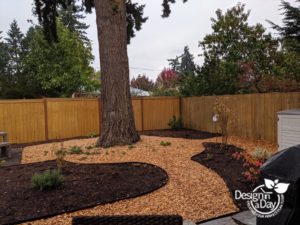
During – Wide path designed around Doug-fir
Designing the Dining Area near large tree roots
One way to create dining space near a large tree is to install a deck – it will have relatively low impact on the root system and allows rainwater through. A deck versus a patio is a better choice for our tree. However, Jill was not too fond of the upkeep or cost of a deck. So we moved on to another good option – cedar chips and crushed rock. These materials also allow rainwater to soak into the ground and do not require too much excavation to be installed. And it’s easy on the budget.
Edibles in Containers
Jill initially wanted veggie beds in the soil, but due to greedy tree roots and the shade cast by the Doug-fir, we needed to employ some tricks to incorporate edibles into this yard. Three large pots or half wine barrels are designed in the sunniest part of the garden for annual veggies like tomatoes. A raised bed was designed next to the existing patio – and furthest from the Doug-fir – where part-sun veggies could thrive, such as greens and lettuces.
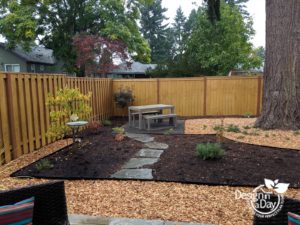
Structure of the Garden all ready to be filled in with Plantings
Turn Unused Side Yard into Play House Space
We turned a previously unused side yard into the perfect play area for grandchildren. Kid-approved plants like Fuzzy Lamb’s Ears lead us down the path to a play structure. As the plants grow up, this area will transform into a miniature secret garden. As a bonus, when the grandkids outgrow the space, the structure can be easily replaced with a bistro table for an afternoon tea.
Planting Plans
Jill is a plant person and we especially had fun creating with a broad plant palette for this garden design.
Drought-tolerant plants that are native plants surround the Doug-fir such as Salal, Sword Fern and a vase shaped shrub called Oceanspray are all up to the task. 75% of the plants we selected are very low maintenance plantings.
For flower power we used well known color magnets like peony, cape fuchsia, hydrangea and more. Jill will add annuals to spice up the summer color.
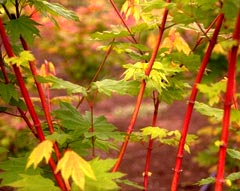
Acer Circinatum “Pacific Fire” photo from Handy Nursery is the winter view from living room
For the view from the living room window we selected a native cultivar of Vine Maple (Acer circinatum ‘Pacific Fire’) which has red twigs in winter.
Materials
Cedar chips, crushed rock and also large flagstone for the path to the dining table.
We enjoyed this design process with Jill and helped her create functional hardscape landscaping with paths and a 2nd sitting area that works well. Now she has plantings that fit our region as well as the color she craves for summer. And the deck? If she decides to add the deck, she has the design for future consideration. With our laid back NW lifestyle and regular visits from grandkids, her simple table and benches sitting on cedar chips will suffice as her second dining area for many years.
Can we help you have the backyard that fits your ideals and lifestyle? Contact us and let’s create together.

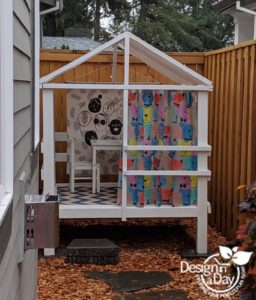
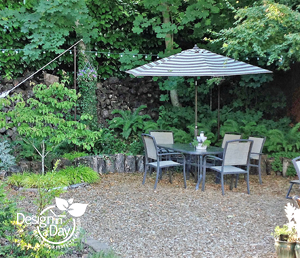 Views over the fence included other neglected yards and they had a large (evil) tree of heaven that had to go. Many plants had died or looked leggy and sun starved.
Views over the fence included other neglected yards and they had a large (evil) tree of heaven that had to go. Many plants had died or looked leggy and sun starved.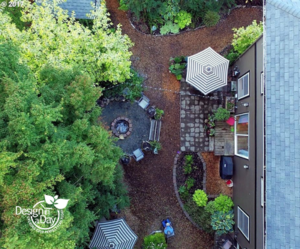 Selecting low water plants
Selecting low water plants